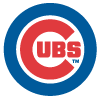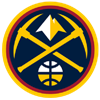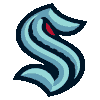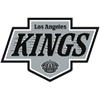There's nothing you could say
To tear me away from my guy
There's nothing you could do
'Cause I'm stuck like glue to my guy
Mary Wells clearly wasn't singing about fantasy baseball, but you'd never know it. Nobody likes to admit it, but we all gravitate towards certain players, drafting multiple shares. Over the years, I've personally been associated with AJ Pollock, Kole Calhoun and Ketel Marte, among others. Most of the time, it's due to an aggressive playing time projection. This was the case with Pollock and Calhoun. With Marte, I was eventually "right", but for the wrong reason. When he first case up, Marte swiped a few bases and I saw the potential for more and continued to take him as a later flyer, citing his latent speed. When he broke out in 2019, many lauded my prescience and patience, but not only had I jumped off the bandwagon by then, the breakthrough was in power, not speed.
I thought it would be fun to see which players populated many of my rosters in early drafts and explain the reasons, focusing more on game theory and the decision-making process than simply saying, "I was higher than the field on the player" (though in some instances, that'll be the case).
For the record, all of my early drafts have either been NFBC leagues, or private leagues with NFBC-style rules. There is a mix between short reserve lists with FAAB and deep draft-and-hold formats. As such,
There's nothing you could say
To tear me away from my guy
There's nothing you could do
'Cause I'm stuck like glue to my guy
Mary Wells clearly wasn't singing about fantasy baseball, but you'd never know it. Nobody likes to admit it, but we all gravitate towards certain players, drafting multiple shares. Over the years, I've personally been associated with AJ Pollock, Kole Calhoun and Ketel Marte, among others. Most of the time, it's due to an aggressive playing time projection. This was the case with Pollock and Calhoun. With Marte, I was eventually "right", but for the wrong reason. When he first case up, Marte swiped a few bases and I saw the potential for more and continued to take him as a later flyer, citing his latent speed. When he broke out in 2019, many lauded my prescience and patience, but not only had I jumped off the bandwagon by then, the breakthrough was in power, not speed.
I thought it would be fun to see which players populated many of my rosters in early drafts and explain the reasons, focusing more on game theory and the decision-making process than simply saying, "I was higher than the field on the player" (though in some instances, that'll be the case).
For the record, all of my early drafts have either been NFBC leagues, or private leagues with NFBC-style rules. There is a mix between short reserve lists with FAAB and deep draft-and-hold formats. As such, some of the strategy will be NFBCentric, but enough of it transcends that format to apply to your home and work leagues.
I'm stickin' to my guy like a stamp to a letter
Like the birds of a feather
We stick together
I'm telling you from the start
I can't be torn apart from my guy
Sean Manaea, Athletics: With so many focused on drafting multiple pitchers early, I've been happy to secure one top arm, then try to assemble a superior group from the SP3-SP5 range. Manaea has been integral to that approach. He's currently the 37th starting pitcher off the board with an ADP around 133, but he checks in as No. 25 on my board, so I'm getting an SP2 at the cost of an SP3. My guess is many don't realize he finished a respectable 21st in the strikeouts department last season. If they do, they likely expect Manaea to tally fewer punchouts this season. While I don't see another leap, I'm expecting close to a repeat to go along with reliable ratios, especially WHIP.
Joe Barlow, Rangers: Not only am I waiting on starters, I'm also avoiding the early closer vortex. By my numbers, closer inflation is $3-$8, depending on the valuation method. This is determined by using historical earnings for each draft spot, then comparing it to the expected earnings for the player. For example, Liam Hendriks and Josh Hader's ADP is around 25, a point at which they're supposed to earn around $26. Using the typical 62:38 NFBC split, I've seen the pair projected to earn between $18 and $23. If we set the bar low and look at the Barlows Scott and Joe, it's the same $3-$8 inflation, just later in the snake. Specifically with Joe, I've seen multiple people suggest he is the Rangers clubhouse leader for saves, but with tenuous job security. While I agree it's far from secure, there is a plausible path for Barlow to succeed in the role. Marks against him are a lack of experience and regression from last season's 1.55 ERA and 0.83 WHIP. Well, no duh, even Mariano Rivera would be expected to post higher ratios. What's being ignored is a solid minor-league track record with saves at every level. Again, the Rangers may bring someone in and/or turn to Jose Leclerc, Jonathan Hernandez, Spencer Patton, Josh Sborz... there's a long list of semi-plausible late-inning options. When throwing darts, though, Barlow is a viable candidate.
Christian Vazquez, Red Sox: Some may scoff and call this a homer pick. I wish it were a homer pick, but Vazquez's power is in decline. It's more of a familiarity pick. Since 2019, only J.T. Realmuto has more plate appearances as a catcher than Vazquez. While I couldn't have told you his exact rank, I was aware Vazquez played a lot. His batting average offers a sturdy floor relative to the position, with the volume in a solid lineup to provide counting stats. Because he doesn't pop anywhere, Vazquez gets lumped in with a bunch of "meh" backstops, and I think he's better than that.
I gave my guy my word of honor
To be faithful and I'm gonna
You best be believing
I won't be deceiving my guy
Bryan De La Cruz, Marlins: De La Cruz best fits the prototypical "Zola guy" in that his skills aren't special, but I expect him to play regularly and he's being drafted after platoon guys. Admittedly, the Marlins have a bit of a logjam in the outfield, but the universal DH should help. At best, De La Cruz is my fifth outfielder, but with the position being a bit shallower this season, many are forced to use a platoon or part-time bat in the OF5 slot.
Jose Berrios, Blue Jays: Berrios is like Manaea in that he finished 14th in strikeouts yet is, on average, the 23rd starting pitcher off the board. Since he's 17th in my rankings, he and Manaea have helped make up the gap in strikeouts after I pass on a second early ace. ERA and WHIP are still a concern, but those can be addressed with a better back-end of the rotation and sage streaming.
Xander Bogaerts, Red Sox: Hey look, another homer pick! This time, I'll admit I'm a big fan, though his presence on many of my rosters doesn't stem from that. If starting pitchers and closers have helium pushing them up, others have lead pulling them down, hence Bogaerts' late third round ADP. While others are drafting their second ace or closer, I'm fortifying my offense with one of the most reliable hitters in the league. Bogaerts lacks flash, but he's a counting stats compiler in a potent lineup. He's also penalized due to minimal steals, but I've been able to address the category since I'm not also looking for pitching with early picks.
Jean Segura, Phillies: As was discussed in Visualizing the Player Pool a few weeks ago, second base lacks quality but is replete with quantity. As such, any early tiebreakers go to the non-second baseman, knowing I can fill the keystone later. Segura's ADP is late in round 13, while my cheat sheet lands him in the middle of round 9, availing me plenty of buffer to draft him with a plus return on investment before the rest of the room shows interest.
Andrew Kittredge, Rays: Kittredge is a product of the manner in which I'm handling closers. To use the NFBC as an example, most have around 85-90 saves as a target to get to the 75th or 80th percentile. The issue is championship teams in 15-team leagues don't finish with 11 or 12 points in each category; they're stronger in some and weaker in others. Winning teams average the fewest points in saves. That is, you don't need 80 saves. Of course, this implies you'll need to make up for the fewer points in the category, but finishing 13th in homers probably means gaining a spot in runs and RBI as well, so there's the difference between 12 and nine points in the saves category. My target is 55-60 saves. That's one conventional CL1 and saves here and there from CL2 and CL3. Kittredge is the ideal CL2 or CL3. He'll be in the mix for Tampa's saves, but if he's not drawing ninth-inning duty, he's compiling strikeouts and lowering ratios.
Luis Garcia, Astros: When I set up my =COUNTIF in Excel, the tally for Luis Garcia was higher than the number of leagues. Of course, there are three players with that name. While I drafted the Padres reliever late in a couple of draft-and-holds, the Astros starting pitcher was the one who had become another of my guys.
There's nothing you can do
Could make me untrue to my guy (my guy)
There's nothing you could buy
Could make me tell a lie to my guy (my guy)
Garcia is an example of drafting an SP2 at an SP3 price. He's the 30th starting pitcher in my rankings compared to the 43rd starter off the board in NFBC drafts. For what it's worth, I'll review my expectations any time I see a discrepancy of this nature. Comparing my projection to those publicly available on Fangraphs, they're more conservative with innings while I don't see why he can't add 15-20 to last season's 155.1 frames. They also project Garcia for a higher home run rate, so I reviewed his underlying metrics and am confident in my lower clip.
Tyler Naquin, Reds: Now we're getting into the deep reserves, which almost always highlights a difference in projected playing time. However, there is another factor with Naquin. Yes, I peg him for more playing time, somewhere in between a strict platoon and a full-time role. Unfortunately, I don't have a solid reason supporting this since he displays platoon splits at the dish and isn't a good fielder. I just don't see anyone as a logical platoon partner. More importantly, Naquin has a characteristic I look for in NFBC-style play, where batters can be changed twice a week. One of my favorite ploys with back-end players is to take advantage of a split that gives them an advantage in a three or four game series. Naquin is not only left-handed, he plays in one of the best hitting venues in the league, so when the Reds are at home and slated to face three RHP, Naquin is in a great spot.
Dylan Bundy, Twins: Pop quiz: Which is a less favorable venue for power, Angels Stadium or Target Field? Wrong, it's Target Field. Furthermore, Angels Stadium is one of the best places for lefty power. With homers being Bundy's main issue, the move to Minnesota and the AL Central should benefit him. Perhaps I need an intervention, but I'm not giving up on Bundy. Most try to draft around 15 starting pitchers in draft-and-hold leagues. In 15-team leagues, that's 225 names, or over seven per team. Anyone with a rotation spot will be picked, even those wearing Orioles and Rockies uniforms. There is a pathway to success for Bundy, and I'd rather throw my dart there than at Keegan Akin.
Kole Calhoun, Rangers: Welcome home, old friend. This one is simple. Calhoun's defense should keep him in the Rangers lineup and I'll use him when they play a series with three right-handers on the docket.
Anthony DeSclafani, Giants: Not only do I try to leverage some sort of split advantage with hitters, I do the same for pitchers. A major flaw of valuation theory is the assumption the player is in an active lineup spot all season, and he's the only player to occupy that spot. Someone like DeSclafani benefits greatly from his home venue. If his home projection is doubled and ranked, he would land much higher than where his actual projection puts him. I'm primarily drafting DeSclafani for his home efforts, so my adjusted ranking is ahead of his conventional ranking, driven by raw projected earnings which includes starts buried on my reserves.
Devin Williams, Brewers: Sometimes, our guys are someone else's guy. With apologies to Rick Springfield,
DVR is a friend
Yeah, I know, he's been a good friend of mine
But lately something's changed that ain't hard to define
DVR's got a spec closer and I want to make him mine
Good bud and colleague, The Athletic's Derek VanRiper, has often suggested the Brewers could deal Josh Hader. If so, Williams value skyrockets to top-five closer status. When you delay your pursuit of saves, you need something like this to manifest. Williams is ideal since he can be used even if he's not closing due to his penchant for punchouts and ability to support ratios.
Jameson Taillon, Yankees: Taillon falls into the streamer category. Aside from the questions about his health, Taillon is likely discounted due to toiling in the AL East and Yankee Stadium. While there should be concern over the tough lineups in the division, his home venue is actually a strong pitching venue. Yes, it is generous for homers, but it increases strikeouts and suppresses hits. Taillon has been a groundball pitcher for most of his career. Last season, he flipped to a flyball pitcher, so there is cause for pause, but I'll take my chances and spot start judiciously.
Manuel Margot, Rays: I'll spare the corny song lyrics and simply say friend and fellow RotoWire contributor Jason Collette has suggested the Rays could deal Kevin Kiermaier, paving the way for Margot to take over in center field and contribute cheap steals to a fantasy roster. Even if Kiermaier isn't traded, he's earmarked for an IL stint or two, so Margot is in play during those stretches.
As a matter of opinion I think he's tops
My opinion is he's the cream of the crop
As a matter of taste to be exact
He's my ideal as a matter of fact
Robert Suarez, Padres: With Mark Melancon and his league-leading 39 saves now with the Diamondbacks, there isn't a clear candidate to close games for the Padres. That said, there are a plethora of options including Drew Pomeranz, Emilio Pagan, Pierce Johnson, the other Luis Garcia and Suarez. He pitched for the Hanshin Tigers in the NPB the past two seasons, notching 25 saves in 2020 and 42 last season. Even if he doesn't close, relievers usually thrive in San Diego, so he can be deployed during weeks when you lack ample favorable starting pitcher matchups.
Brian Anderson, Marlins: There's really nothings special here, Anderson is solely a very late depth piece in draft-and-holds. He'll begin the season with only third base eligibility, but should pick up outfield as well. When players benefiting from the universal DH are discussed, Anderson usually isn't included, but he should be.
Carlos Santana, Royals: Another deep reserve, I'm willing to give Santana one more chance. Keep in mind, when I say deep reserve, I mean he's my third or maybe fourth stringer at first base. Nick Pratto looms, but there's also a chance Kansas City plays Santana, hoping for a rejuvenation, and then they send him to a team needing an offensive lift. With 15 more teams (and DH spots) as potential suitors, I'll take that chance.
Brad Keller, Royals: DeSclafani's streaming edge was his home venue. Keller's is pitching in a weak division, though he doesn't get to face his own lineup. Still, he should draw the Twins, Tigers and Guardians enough to stream a few times.
There you have it, 20 of my guys. Hopefully you gleaned something from the thought process.
And no muscle bound man could take my hand from my guy (my guy)
No handsome face could ever take the place of my guy (my guy)
He may not be a movie star
But when it comes to bein' happy we are
There's not a man today
Who could take me away from my guy






































